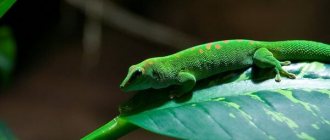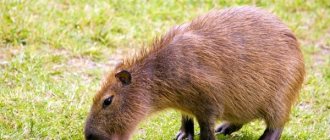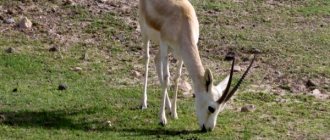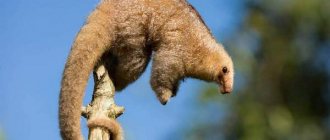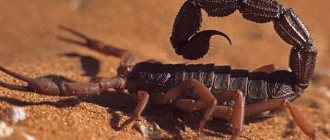Meerkat (older name - meerkat) (lat. Suricata suricatta) is a predatory mammal from the mongoose family. These animals live in the arid regions of Southern and Southeast Africa, Angola and Botswana; inhabit the entire desert, as well as the semi-desert and savannas of the Kalahari and Karroo. The only exceptions are the Namib coastal strip with dunes.
At first glance, this animal evokes tenderness and sincere sympathy for itself. The local population considers him a solar angel who protects people from the devil and lunar werewolves. In addition, the animals destroy many unwanted insects - this is how they deserve the friendly attitude of people towards them.
Species and man
Meerkats are amazingly charming little creatures that always make you smile. Africans have two beliefs associated with meerkats. According to one of them, the animals are called solar angels. And not just because they love to soak up the morning African sun. It is believed that they protect settlements and livestock from werewolf moon devils who attack people and animals (the moon devils are probably bats). In addition, by settling near huts, meerkats clear the area of scorpions and even poisonous snakes, which they eat. Meerkats are easily tamed, and local residents sometimes keep them in their homes to protect their homes from poisonous animals.
According to another legend, the souls of the dead move into the meerkat, which is why these animals are so friendly to people. An animal looking around can stand on its hind legs for a long time, and from afar a group of animals warily listening to the sounds of the desert can be mistaken for crowded little people. For this they are sometimes called “little people.” And thanks to the vigilance shown by the meerkat family, they received another affectionate nickname: “desert sentries.”
Meerkat safety in the home
When keeping a meerkat at home, first of all, you need to take care of the safety of the pet.
- Restless animals like to explore narrow crevices where only they can get through, thereby risking being crushed. Seal any potentially dangerous openings and always use caution when folding and unfolding your sofa.
- To avoid accidents, animals should not have access to an unglazed balcony, and strong mosquito nets should be placed on the windows.
- All household chemicals must be hidden in a place inaccessible to the animal.
- Small parts, beads, buttons, threads, etc. should not be in a place easily accessible to the animal. The same applies to kitchen waste, especially seeds.
- Before turning on the washing machine, do not forget to check that your pet is not resting in it.
- Every time you close the door, make sure that there is no little fidget nearby.
- Never give your meerkate any human medications or medications intended for other animals. Do not try to treat your animal for anything on your own - it is better to find an experienced veterinarian who specializes in exotic animals in advance.
Is it difficult to keep such an exotic pet as a meerkat at home? Definitely not as simple as it might seem to the uninitiated. Before you bring this cutie into your home, weigh the pros and cons. Taking an animal into your home is always a responsibility and certain difficulties, especially at first. And adopting an exotic pet is doubly difficult. But they are more than compensated by the moments of joy and happiness that the solar angel will bring into your life.
- Big-eared fox
- Mongooses - photos,...
- Skunk: photo,…
- Wombat: photo,…
- Kinkajou: photo, description
- Why do people...
Appearance and morphology
Small graceful animals, the smallest in the mongoose subfamily: their length is only 50–60 cm, with almost half coming from the tail, and the weight of only very large individuals reaches 1 kg. Females are slightly larger than males. Meerkats are distinguished from other mongooses by their high legs, four-toed paws, a strong tail, evenly covered along its entire length with sparse hair, and the absence of the first false root tooth. The feet of this animal are very characteristic: they are armed with long and strong claws, which, especially on the front paws, reach such a development as in no other member of the family. With the help of these powerful claws, the meerkat easily digs deep passages, obtaining food and arranging a home.
Meerkat fur is quite coarse, grayish-brown in color with a yellowish tint; against this background, eight to ten intermittent dark stripes that do not have clear outlines stand out in the back of the back. The hair on the legs is lighter, on the belly and chest it is sparse and has a silvery tint; lips, chin and cheeks whitish; the tip of the muzzle, the ring around the eyes, the ears and the tip of the tail are black. Eyes with large round pupils and brown silver-gray irises.
Meerkats have a very keen sense of smell, which is necessary for searching for insects that burrow deep into the sand, especially during the dry season. Long vibrissae on the muzzle help them navigate in the dark tunnels of their burrows.
The animals have acute vision, allowing them to spot a predator from afar. Dark circles around the eyes absorb excess ultraviolet radiation, allowing meerkats to look almost directly into the sun. They have a highly developed third eyelid, which reliably protects their eyes from sand.
Habitat
Meerkats can be found in desert areas in the southern African continent. Large populations live in the interior of the Kalahari Desert in Botswana and the Namib Desert in Namibia, as well as in southwestern Angola. They can often be found in Zimbabwe and Mozambique.
Photo: Ann and Steve Toon
These animals have many adaptations that help them survive in dry, arid climates, including dark spots around their eyes that reduce sun glare. Meerkats also have special membranes that cover their eyes while digging holes. Their ears may also close when they dig.
Meerkats are exclusively wild animals. They do not make good pets because it is very difficult to meet their complex needs in captivity, and therefore meerkats may develop behavioral problems. In addition, in captivity they are often given the wrong diet, as a result of which the animals suffer from excess weight gain.
Nutrition and feeding behavior
Meerkats are carnivores and their main food is insects and other invertebrates. They happily eat lizards, bird eggs, small rodents, and their young. The unique ability of meerkats to eat animals whose poison can even kill a person is widely known. They successfully hunt scorpions, eating them along with the poisonous gland. Some poisonous snakes also cannot protect themselves from meerkats, although large cobras pose a mortal danger to the animals. Meerkats drink extremely rarely, being content with the moisture contained in the food.
Meerkats have a very intense metabolism: during the night they burn a large amount of calories and lose about 5% of their body weight, so the animals eat a lot. Researchers have found that during an hour of feeding, an adult meerkat eats an average of 30 food items.
In the summer, during the rainy season, meerkats have no shortage of food: the ground is literally teeming with insects that crawl along the surface, and if they bury themselves, they do so to a shallow depth. Therefore, the animals do not need to move far from the hole, and they hunt near the house. Each meerkat gets its own food; adults do not share their prey with each other, but children are a different matter. Babies begin to accompany adults on hunts at the age of one month, and all family members feed them. Initially, adult meerkats give the cubs a taste of soft larvae, gradually teaching them to hunt large invertebrates, including scorpions, and then vertebrates.
During feeding, one of the group members must “stand guard” in order to notice the approach of a predator in time. In order to have a better view, meerkats climb onto stones, stumps and even bushes, and can balance on thin branches while standing on their hind legs. When danger approaches (a predator or another group of meerkats), the observer notifies the entire group about it with a special signal.
With the onset of the dry season, it becomes increasingly difficult for meerkats to find food that hides deep underground. They have to move considerable distances from the hole - 2–3 or more kilometers, often raiding the territory of their neighbors. The relationship between animals during feeding becomes more rigid - they can take food from each other and even from the cubs. This behavior is especially typical for a dominant female if she is pregnant. It is at this time of year that single animals die, which are forced to simultaneously search for food, watch out for predators and avoid encounters with aggressive brothers.
Natural enemies
Small meerkats often become prey for larger predators. The greatest threat is posed by eagles and other birds of prey. If such danger is detected, the animals rush to the nearest shelter.
Often a group of meerkats moving in search of food is attacked by jackals. In this case, the animals scare away the enemy by huddling together and standing on their hind legs. Cubs and young predators also become prey for large snakes, such as the king cobra.
MARTEN
Activity
Meerkats are diurnal animals: they spend the night in burrows, huddled closely together and warmed by collective warmth. After sunrise, the animals appear on the surface and begin cleaning the home. Excess soil is thrown away, the entrances to the hole are cleaned and expanded. In addition to cleaning, a mandatory morning procedure is sunbathing. Meerkats stand on their hind legs, turn their heads towards the sun and stand, basking in its rays. The skin on their belly is dark and their fur is sparse, so they warm up quickly. After finishing the morning procedures, the whole family goes to feed. If the place where meerkats feed is far from the hole, they return to it only in the evening, resting during the day in the shade of trees or in a temporary shelter near the feeding site. When there is enough food near the house, the daytime siesta takes place in the native hole.
Interesting Facts
Meerkats are amazing creatures that amaze ordinary people with their unusual behavior and way of life. Animals have been studied for decades by various groups of scientists, but small predators still have something to surprise not only ordinary people, but also leading experts.
Interesting Facts:
- Locals call meerkats sun angels. Aborigines believe that the animals protect their homes from moon demons, werewolves and other undead.
- More than 5% of deaths among meerkats occur due to fights between relatives during the struggle for territories and food plots.
- After the meerkat bites off the tip of the scorpion's tail, it rubs sand on its back to remove any remaining poison.
- Meerkats have a well-developed third eyelid, which protects their eyes from dust and sand. And the ears, in turn, are protected by membranes that prevent contamination.
- Meerkats rise on their hind legs to better see the territory. If there is a stone or a fallen tree near the “post”, the animal will definitely take advantage of the hill.
- The dark circles of fur around the meerkat's eyes absorb some of the sun's rays and allow the animal to look at the light. This feature helps the animals notice a bird of prey in the sky in time.
- Only the Alpha female has the right to reproduce. If a subordinate in a group becomes pregnant or gives birth, the eldest will expel her from the group and may even kill the offspring.
- If a moving group is noticed by predators, the meerkats stand in a circle and rise on their hind legs. This way they become a little larger and may well scare away cowardly animals.
- In Africa, meerkats are kept in homes to protect them from insects, small rodents and snakes.
- In one day, a meerkat can dig a hole up to 1 meter deep and pour out soil whose weight is 50 times the weight of the animal.
- Meerkats communicate with each other using more than 20 sounds and combinations. Different tonality and duration have their own special meaning. With the help of “words,” meerkats can inform the group about danger, tasty food, or scold the kids.
- When attacked by predators, adult meerkats cover the retreat of the babies or gather around them. Brave animals are ready to protect their cubs from any danger, even if they themselves are in danger of death.
- Meerkats are social animals and live in families, which form groups of 20 to 60 individuals.
- An ordinary female meerkat was born at the Adelaide Zoo in Australia, but with age she became completely white. The reason for the complete loss of pigment has not yet been determined.
- In the burrows and tunnels of meerkats, there may be up to 15 emergency entrances and exits.
- Animals often occupy other people's tunnels.
- Before a fight, meerkats often pose in front of their opponents to intimidate them. Sometimes a demonstration of growth is enough to make the enemy retreat.
- Meerkats can survive a snake or scorpion bite. But especially dangerous species can kill a brave animal.
- Meerkat colonies have kindergartens where all available members of the group look after the babies while their parents are busy searching for food or digging tunnels.
- The leader of the group is always the female. She is much larger than the males.
- The dominant female fights for the right to stand at the head of the colony and is ready to fight to the death with her competitors.
- Among meerkats, pairs are formed once and for life. But if the male does not look at others, then females can occasionally “feast” their offspring with other partners.
- When hunting for large prey, meerkats team up and together they can kill even a large snake or lizard.
- Meerkat cubs undergo a full training course under adult supervision. They are taught to care for each other, gather and hunt, and are also taught the skills of eating dangerous prey and digging holes.
Social behavior
Until recently, meerkats were studied extremely poorly, but long-term observations of individually marked animals in southern Africa using modern research methods have made it possible to understand these animals much better.
The main structural unit of the meerkat population is the family, in which strict matriarchy reigns. The entire life of the family is controlled by the main female: she chooses the hole in which the family will live, the place of feeding, and, most importantly, only she has the right to give birth to cubs.
The dominant male is determined in inter-male interactions; as a rule, it is he who forms a pair with the main female and becomes the father of all the babies born to her. A couple can dominate for several years, and the family will grow at the expense of its offspring. The number of animals in a family is usually up to 30 individuals, small groups of meerkats are very vulnerable to predators, and large families (more than 40 animals) find it difficult to maintain unity.
The meerkat family has a certain group smell, which is achieved by marking the animals with each other. Group members do everything together - they feed and rest at the same time, take care of the kids together and act as a united front against enemies. During feeding, the family always posts “sentinels” who carefully survey the surroundings and warn in time about the approach of a predator. “Nannies” look after the babies, and not only young females, but also males can act as nannies. Grooming is very important in the meerkat community - the animals not only free each other from parasites, but this activity brings the family even closer together.
Each group of meerkat adheres to a specific protected area. The size of the territories of different families living, for example, in the Kalahari, is from 1 to 3 square meters. km, each has at least 5 burrows suitable for family life. A burrow, especially one dug in soft soil, can occupy an area of 25x32 m; it is a complex network of branched corridors with chambers and has up to a hundred exits. On average, however, the burrows occupy an area of 5x5 m and have 15 exits. The burrows go 1.5 - 2 meters deep, and therefore the temperature in it is quite constant and remains between 22-25. A family can live in one hole for several months, but multiplying fleas and ticks force the animals to regularly change their home. A change of burrow most often occurs before the appearance of the offspring of the main female; only in exceptional cases does the group move when there are babies in the burrow. When “moving to a new apartment,” small cubs are carried in the teeth of adult family members. The surroundings of the burrows are carefully marked with the secretion of special glands.
Territorial conflicts rarely occur in summer, when food is abundant. Families can feed at a distance of several tens of meters without noticing or ignoring each other. When meeting in the border zone, groups are limited to ritual border interactions.
With the onset of winter, food becomes less and less, and meerkat families can invade other people's territories. When the sentries notice strangers, they make a loud, abrupt sound, and all the animals in the group, with their tails raised and fur ruffled, stand shoulder to shoulder to defend the territory. After a few minutes of confrontation, one of the families rushes to attack. Each group feels more confident in its own territory, and often uninvited guests immediately take flight. Bloody battles rarely occur between stable groups of equal numbers, but if a family has grown significantly over the summer, it seeks to expand its territory. In such cases, fights can be very fierce and even end in the death of some of the animals. Meerkats are especially selfless in protecting their burrows with the cubs in them, since the cubs left behind will be killed by strangers.
If during the wet season several new groups of meerkats formed, then in winter a redistribution of territories is inevitable, which will be accompanied by fierce fights.
Where do they live?
The historical habitat of meerkats is limited to the southern part of the African continent. The most suitable climatic zones for the life of predators are arid steppes, semi-deserts and deserts.
Where live
The usual habitat for meerkats is plains with little vegetation and dense soil. They can also be found in rocky steppes and deserts.
Meerkats use crevices or caves in rocks or holes in the ground as shelters. Digging holes with many passages and strengthening already built caves takes almost as much time as searching for food. Sometimes families inhabit the vacated homes of rodents.
African meerkats do not live in one place for a long time and periodically move to neighboring territories, where they again begin to build a shelter.
Reproduction and raising offspring
Meerkats reach sexual maturity at the age of one year, but in the wild they begin to reproduce later. The main female has the absolute advantage in reproduction. If any of her grown-up daughters have cubs, she can kill them, or kick the “offending” female out of the group, or transfer the entire group to another hole, leaving the new mother with the babies.
The female is capable of bearing offspring up to 4 times a year, however, in the vast majority of cases, reproduction is confined to the summer, wet season and occurs from October to March. As a result of pregnancy, which lasts 70–77 days, from 2 to 5 cubs weighing 25–30 g appear in the burrow. After feeding the babies, the mother and her group go hunting, and a “nanny” remains with the children, who does not leave them until the other group members return. Children are fed milk not only by the mother, but also by other females of the group, and for meerkats such a phenomenon as allolactation has been described: milk appears in nulliparous females. The cubs' eyes open on days 10–14, but they emerge from the burrow only 3 weeks after birth. One of the group members stays with them during the day for another week, and at the age of one month, the babies go hunting with the adults. The older members of the group first give them a taste of the larvae, and later bring more serious prey. It is typical for meerkats to teach the young: children not only watch the hunt, the elders show them how it is done. At the same time, adults determine the degree of readiness of the baby to cope with this or that victim by their sounds. Milk feeding stops at 7–9 weeks of age.
2–3 days after the birth of the babies, the female is again ready for mating. At this time, the dominant male of the group does not leave her side and carefully guards her from other males. In the summer, when there is a lot of food around, older males from neighboring groups can hang around the feeding family, they attract young females, but a dominant female can also come to them for a “date.” After mating, these males return to their families, but sometimes they take away young females and then a new meerkat family is formed.
Keeping a meerkat at home
Meerkats adapt well to life in captivity and are easily tamed; they are cheerful, active, curious, playful and affectionate, just like kittens, and remain so until old age (and these animals live in captivity for more than 12 years). These qualities make meerkat very attractive to keep at home. But since in nature these animals are accustomed to living in large families, it is better to have not one, but two meerkats; If you don’t want to get offspring from them, you can have same-sex ones. Together, the animals will never be bored - there is always someone to play with and someone to take care of - this is very important for meerkats. A human is a friend to a meerkat, but still cannot replace his family.
Meerkat as a pet
Meerkats are friendly and sociable and generally get along well with other pets such as cats, ferrets and small dogs. To some extent, the presence of four-legged animals in the house can even compensate for the lack of attention from the owner.
Meerkats love to “talk” and make more than 30 sounds that express various emotions, but at the same time they cannot be called noisy animals.
Meerkats do not need a cage. Their territory is the entire apartment. The curious animal loves to move freely around rooms and watch what is happening around. At the same time, as a rule, they do not damage furniture and things, and do not chew wires. The pet will only need a house with bedding - here he will sleep. Since meerkats naturally live in burrows, an elongated house is suitable.
For the safety of the animals, some owners lock the meerkat in a cage in their absence. The cage should be so spacious that the animal can calmly manage, without restricting its movements. The cage should have everything you need - a soft bed, bowls of water and food, a tray.
It will be more difficult to toilet train a meerkat than a kitten, but a patient owner can do it. You can use the same cat litter box as a toilet, just don’t forget to change the litter more often.
As desert natives, the animals do not tolerate cold and drafts, but love the sun and warmth. In their homeland, meerkats love to sunbathe. When keeping a meerkat at home, he should also have this opportunity. In summer, there are no problems with sunlight, under the rays of which the animal could bask - it is enough to provide it with access to one of the window sills on the sunny side. But in winter, it is recommended to install a UV lamp in a suitable place, so that at this time of year your pet can bask in the rays of the sun, albeit artificial.
Meerkats also love sand. Please your pet - arrange a mini sandbox for him, where he will enjoy spending time.
Don't forget about toys. Nowadays, pet stores have a wide selection of toys for any pet - choose something that rustles and squeaks for your pet.
Bathing
The fur of a meerkat gets dirty, especially if the animal walks outside. You need to wash your pet's paws after every walk. And at least once a month, the meerkat will need to be bathed using a mild pet shampoo. It is better to do this in a washbasin under running warm water. In this case, it is necessary to ensure that water does not get into the animal’s ears, otherwise the consequences may not be the most pleasant (you may even have to contact a veterinarian). Meerkat swimmers are unimportant, so they should not be allowed to swim freely in a basin of water. After water treatments, do not let the animal run around the apartment; first wipe it with a towel and then dry it with a hairdryer.
Walks
If the weather outside is good, you can take a walk with the meerkat. For this event, you should purchase a ferret harness. Walking is possible only in the warm season and after all the necessary vaccinations (distemper and rabies). Vaccination for meerkats is the same as for ferrets. If the animal lives with cats and dogs, then it must be treated against ticks and fleas.
During a walk, you should never let the animal off the leash, otherwise it may run away or get hit by a car.
Breeders' opinions
Almost all owners, without exception, leave only positive reviews about meerkats. This cute animal is loved by a huge number of people in our country. They characterize the animal as smart, affectionate, problem-free.
The owners like the fact that it is not intrusive and does not bother you with its attention, and does not spoil household things. He can climb into the closet and turn everything over, but he won’t tear or chew anything. The animal's claws are not intended to tear anything in the apartment.
The meerkat's cheerful disposition remains with him throughout his life. The animal will get along well with a cat if it does not have an evil disposition. The meerkat treats guests with curiosity, comes out to get acquainted, and does not show aggression.

